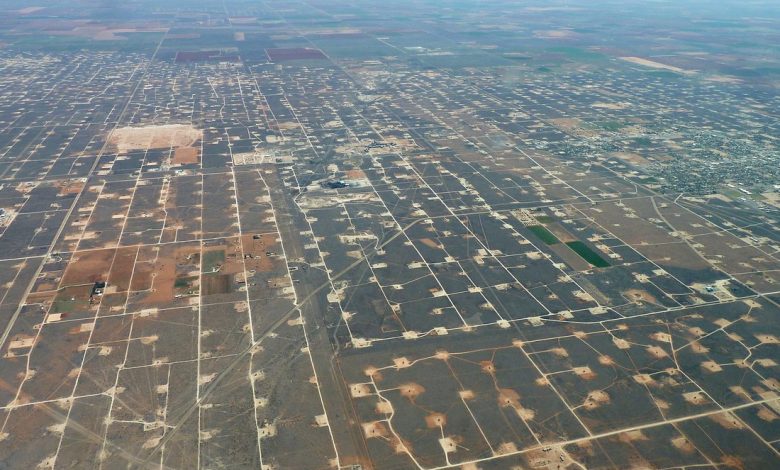The West Texas Oil Boom That Changed the World

Midland’s Transformation
The small town of Midland, Texas has become the center of America’s oil and gas boom. For years, Midland was a sleepy town in West Texas with small-scale involvement in the oil industry. Within the past decade, technological breakthroughs in hydraulic fracturing have transformed this community into one of the world’s most important players in the oil and gas industry.
The method of injecting water into the ground to force up oil and gas embedded deep within shale deposits has made it economically viable to access oil locked within the Permian Basin. Technological innovation and persistent investments from the oil industry have transformed the Permian Basin into the world’s second-most-productive oil field and enabled the U.S. to become the world’s largest oil producer (Krauss, 2019).

Tremendous Economic Growth
As oil production has increased, the population of Midland has exploded. Last year, the community reached 142,000 residents, which is up over 30% in the past decade. A study commissioned by Midland public officials has concluded that the population will reach 250,000 by 2030 (Isidore, 2019).
The shale-drilling frenzy has dramatically boosted the local economy by increasing local wages and driving down unemployment to nearly twice as low as the U.S. as a whole. However, the good economic times have also led to some challenges for the community. Housing prices have skyrocketed, roads have become clogged with traffic, and long-time area employers are struggling with a shortage of workers. While the growing pains have become more prevalent, the people of Midland are happy to have achieved robust economic growth.

The Permian Basin
By the end of 2019, the Permian Basin region of West Texas is projected to have generated an average of 3.9 million barrels of oil per day, which is nearly a third of the total oil production in the U.S. (Worland, 2019). While the recent drop in global oil prices has led to some fossil fuel companies to bankruptcy, the cost-savings provided by fracking technology have allowed production to continue to expand in Midland. According to the International Energy Agency (IEA), U.S. oil production is expected to equal that of Saudi Arabia and Russia combined by 2025 (Worland, 2019).
Stretching across over 75,000 sq. mi. of West Texas and New Mexico ranchland, the Permian Basin oil boom has upended the international energy industry by tilting the balance of power away from Russia and Saudi Arabia, and back towards the United States. René Ortiz, the former secretary-general of the Organization of Petroleum Exporting Countries (OPEC), has expressed how OPEC producers never though that a region like Midland, Texas would be able to become a star producer in the global oil market (Krauss, 2019).

Future Growth
In 2018, oil production in the Permian Basin grew by a million barrels a day and is on the verge of surpassing the output of the world’s biggest oil field in Ghawar, Saudi Arabia (Krauss, 2019). Moreover, the region now produces more oil each day than any of the 14 members of OPEC, with the exception of Iraq and Saudi Arabia (Krauss, 2019).
Bipartisan support from both the Obama administration and the Trump administration has helped to drive oil production and regional job creation in West Texas. The Federal Reserve Bank of Dallas recently released a report that estimates how new Permian Basin oil wells break even at $50 a barrel, which is far less than the $80 a barrel that Saudi Arabia spends on average to extract the same quantity of oil (Worland, 2019). Now, instead of worrying about the price of oil, Midland oil producers are worried that they may not have enough oil and gas pipelines and other infrastructure in place to accommodate future production growth.
Sources
Isidore, C. (2019). “Midland, Texas: America’s ultimate boomtown.” CNN.
Krauss, C. (2019). “The ‘Monster’ Texas Oil Field That Made the U.S. a Star in the World Market.” The New York Times.
Worland, J. (2019). “How an Oil Boom in West Texas Is Reshaping the World.” Time.



